Unram Temple
Photos Home
Country Photos
Korea
Korea Update 2014
Andong 2014
In and Around Andong 2014
All photos on this
page
© 2013 John Holstein
jfholstein@yahoo.com
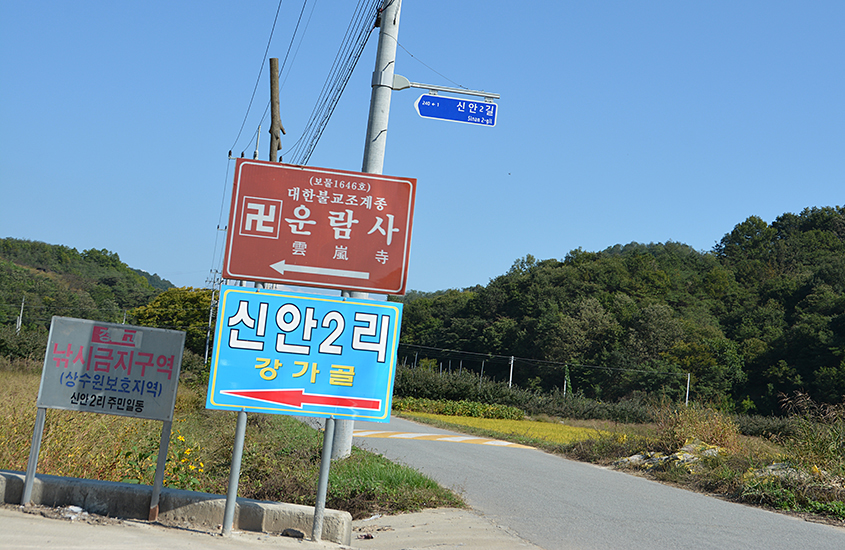

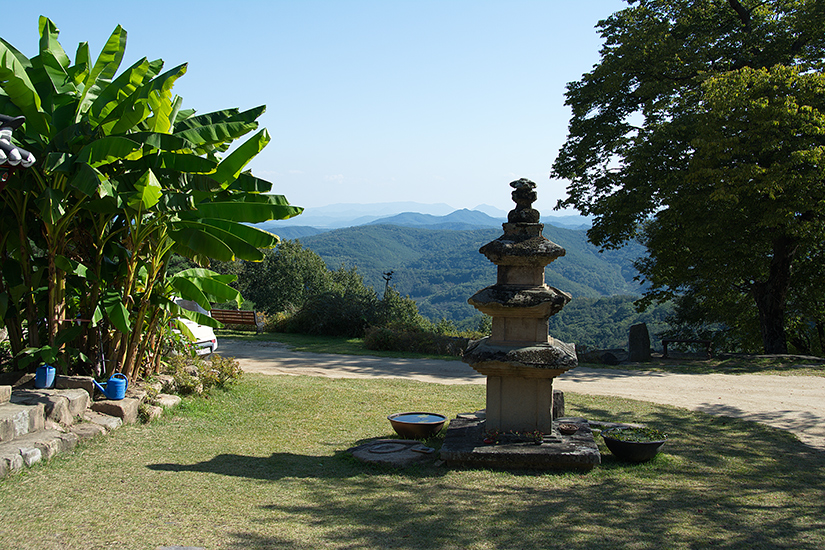
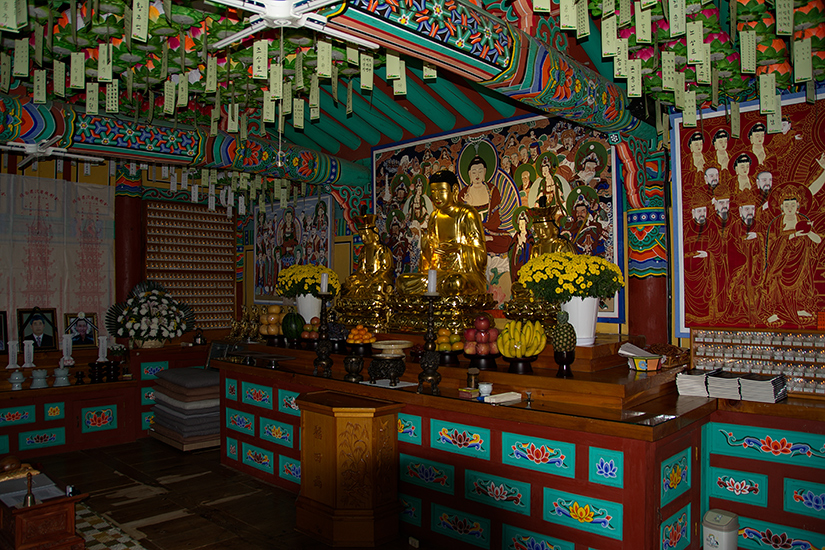
This
and the next two shots were taken inside the main (Buddha) hall.

The
main altar
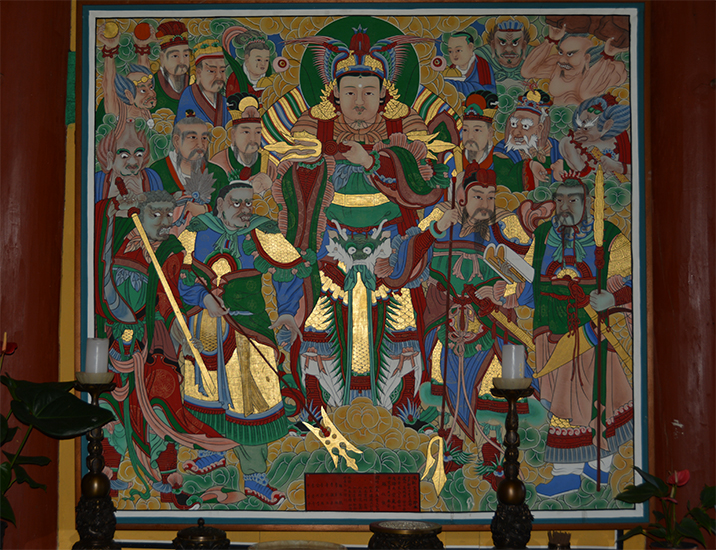
The
main hall's Guardian painting, featuring Skanda, son of Shiva, who is
guardian of the Dharma. The gentleman in white whiskers, to Skanda's left,
is the Dargon King. The one with the topknot, to Skanda's right, is the
Mountain God; the fan that he is holding is the Taoist symbol of his power
of levitation.
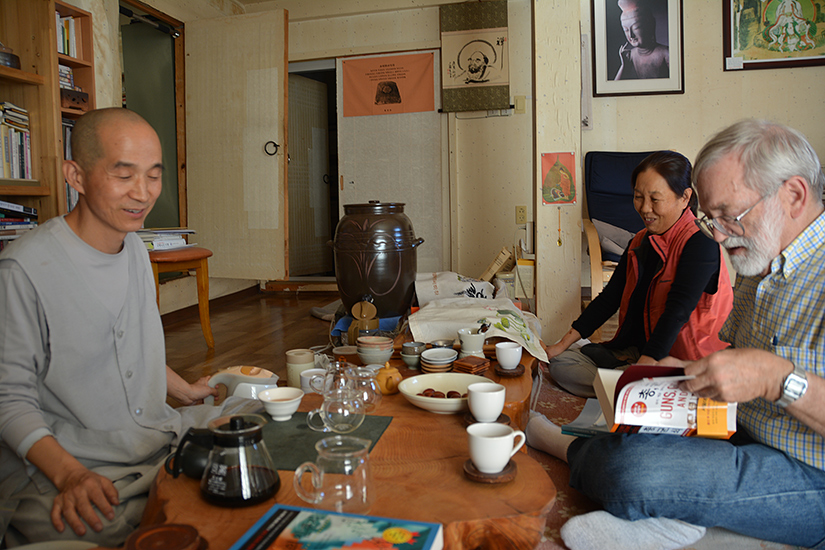
Inside
the temple master's quarters
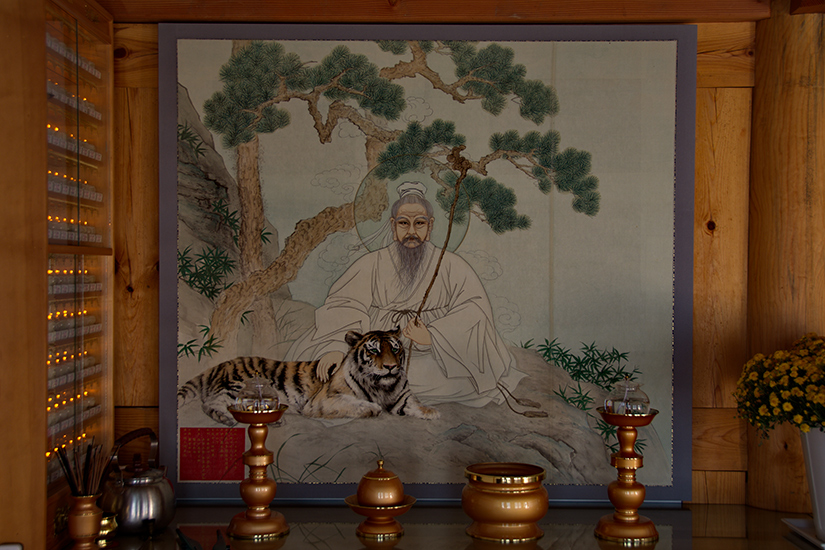
Sanshin
the Mountain God and the next two paintings are in the Three Saints Pavilion.
(Initially I translated Sanshin as Mountain Spirit, but Brian reminded
me that spirit in Korean is shinryeong.)
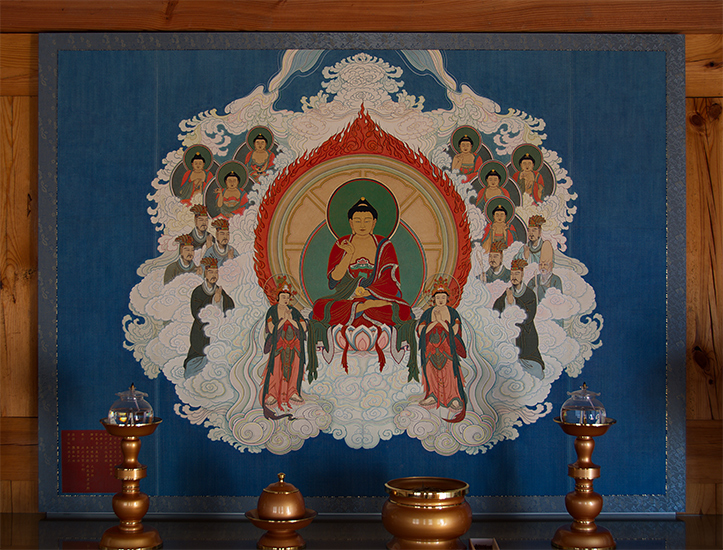
Chilseong,
the Big Dipper. The Buddha of Effulgence is in the center. The seven stars
of the Big Dipper are represented here twice: the seven boddhisatvas and
the seven males in human form; the one with the long head is North Star,
not one of the Big Dipper. The two boddhisatvas at the feet of the Buddha
are attendant boddhisatvas.
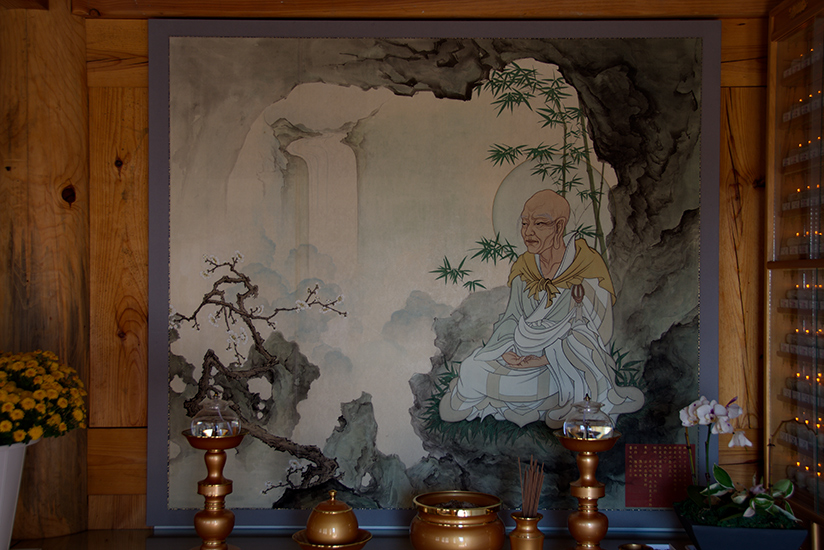
Dokseong
the Hermit

Condiment
jars. Ken reminds me that "they stand on the extremely photogenic
site where the haeuso used to stand."
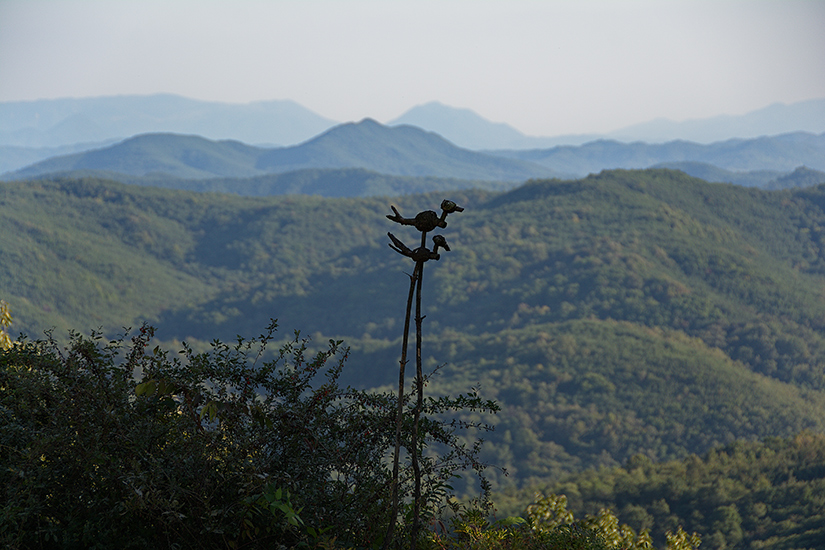
These
are u-ju-mok (Cosmos Tree? Cosmos Wood?) from the Dolgans of
central Asia, from where the first Koreans are thought to have migrated,
long before Buddhism or Taoism or Christianity ever heard of Korea. This
is quite commonly seen in Korea, usually used for artistic effect. (If
you know anything about this symbol, please share it with me!)
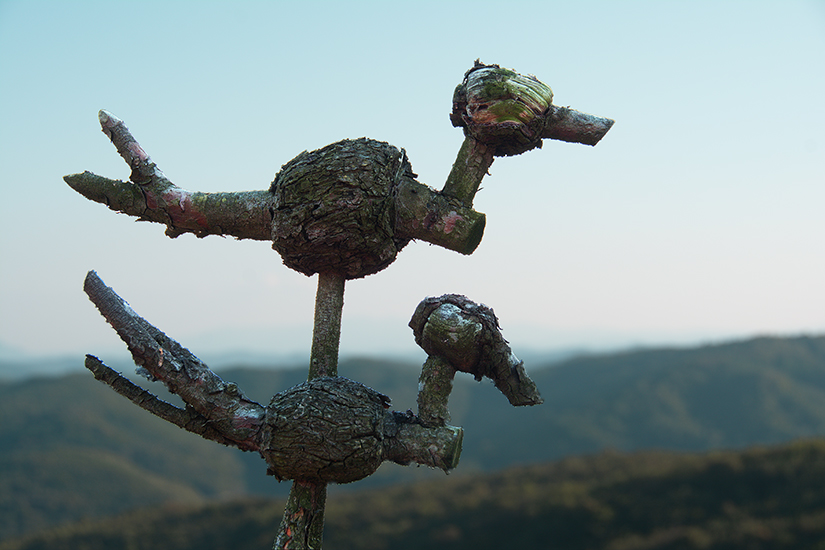
Back
to Andong 2014